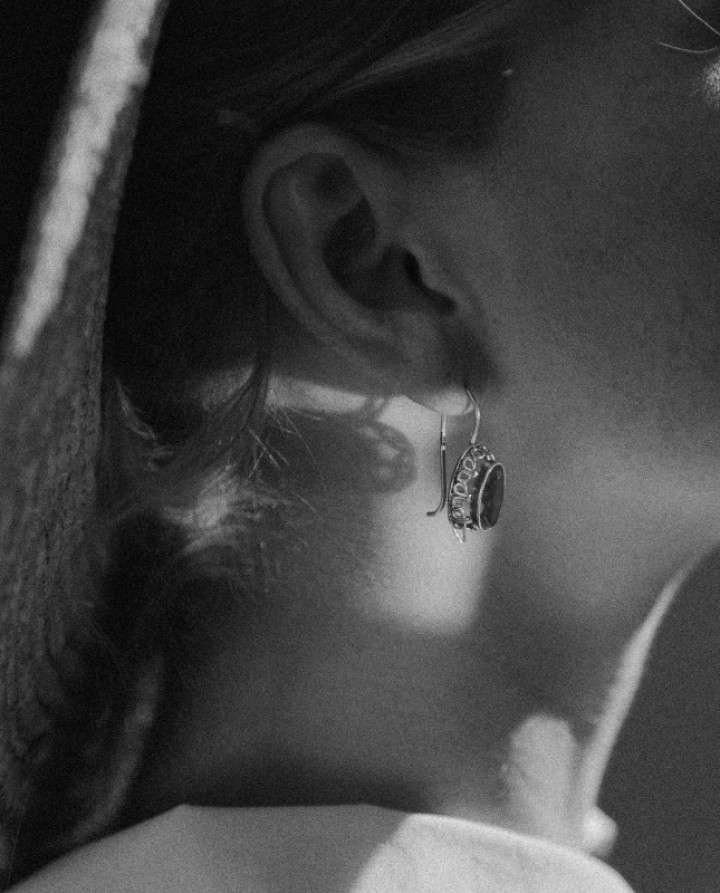Ear surgery
OTOPLASTY
Whether you're looking to correct protruding ears, reshape ear deformities, or enhance your overall facial harmony, otoplasty offers a remarkable opportunity for lasting change. In this guide, we'll explore the ins and outs of otoplasty, from understanding the procedure and its benefits to recovery and long-lasting results. Your journey to ear transformation begins here.
WHAT CAN SURGERY
OF THE EAR ACCOMPLISH?
- Correct protruding or prominent ears.
- Reshape ear deformities.
- Reduce the size of earlobes.
- Correct ear injuries.
- Achieve balance and symmetry.
- Enhance confidence.

Discover the Artistry of Otoplasty: Elevating Self-Image Through the Precision of Ear Transformation, Where Confidence Meets Custom Craftsmanship.

AN OTOPLASTY PROCEDURE IS A GOOD OPTION FOR YOU IF
- You are in good overall health
- You have realistic expectations about what otoplasty can achieve
- You follow Pre- and Post-Operative Instructions
- You do not have active ear infections or other ear-related issues
- You are prepared to take time off for recovery (~2 days)
| Otoplasty | Surgical procedure to reshape and reposition the ears lobes |
| Protruding Ears | Ears that stick out noticeably from the head |
| Ear Deformities | Structural abnormalities or irregular ear shapes |
| Earlobe Reduction | Surgical reduction of the size of the earlobe |
| Bandage or Dressing | Materials used to protect and support the ears after surgery |
| Cartilage | Flexible tissue that makes up the framework of the ear |
| Local anesthesia | A drug injected directly to the site of an incision during an operation to relieve pain |
| Scarring | Marks or tissue changes resulting from the surgical incisions |
Be prepared to discuss:
- Your goals and reasons for considering otoplasty.
- Your medical history, including any allergies or medications.
- Any previous ear surgeries or treatments.
- Any concerns or questions you have about the procedure.
- Photos of ears you admire or wish to resemble.
Your surgeon may also:
- Examine your ears to assess their current shape and condition.
- Discuss the surgical techniques and incision placement.
- Explain the risks and benefits of otoplasty.
- Provide an overview of the recovery process.
- Share before-and-after photos of previous patients.
- Offer a cost estimate and discuss payment options.
This consultation is an essential step in determining if otoplasty is the right choice for you and allows you to address any concerns or questions you may have.
Before ear surgery, you may be asked to:
- Avoid certain medications, like blood thinners, that can increase the risk of bleeding.
- Arrange for someone to drive you to and from the surgical center.
- Fast from food and liquids for a specified period before the surgery.
- Remove makeup, jewelry, and piercings on the day of the procedure.
Special instructions you receive will cover:
- How to care for the surgical area before the procedure.
- Guidelines for fasting, including the specific hours to stop eating and drinking.
- What to wear on the day of surgery, typically loose-fitting, comfortable clothing.
- Post Operative care instructions for the recovery period.
- How to manage any necessary prescriptions for pain or antibiotics.
- Restrictions on physical activities and when you can resume them.
- Contact information for any questions or concerns before and after the surgery.
Following these preoperative instructions is crucial to ensure a safe and successful otoplasty procedure. Your surgeon will provide you with personalized guidance during your consultation.
- General Risks: Otoplasty, like any surgical procedure, carries inherent risks such as infection, bleeding, and adverse reactions to anesthesia.
- Scarring: While surgeons strive to minimize scarring, there is always a possibility of visible scars at the incision sites. Most scars, however, are discreet and hidden within natural ear contours.
- Asymmetry: Achieving perfect symmetry can be challenging, and there may be slight differences between the ears after otoplasty.
- Overcorrection or Undercorrection: In some cases, the ears may be overcorrected or undercorrected, affecting their position and appearance.
- Numbness or Sensitivity Changes: Temporary numbness or changes in sensitivity around the ears are common but typically resolve over time.
- Infection and Hematoma: Postoperative infections or hematomas (accumulations of blood) can occur but are rare.
- Revision Surgery: In some cases, revision surgery may be necessary to achieve the desired results or address complications.
- Anesthesia Risks: Anesthesia carries risks, including allergic reactions, respiratory issues, or adverse drug interactions.
- Unsatisfactory Results: While otoplasty aims for aesthetic improvement, individual perceptions of the results can vary, and expectations should be discussed thoroughly with the surgeon.
- Keloid Formation: In some cases, raised or hypertrophic scars known as keloids can develop, but this risk is relatively low.
- Complications: Complications, although rare, can occur. It's essential to choose a skilled and experienced surgeon to minimize these risks.
Safety is a top priority, and by choosing a board-certified and experienced plastic surgeon and closely following pre- and post-operative instructions, you can reduce the risks associated with otoplasty. A thorough discussion of risks and benefits should take place during your consultation to help you make an informed decision.
- Anesthesia: The procedure typically begins with the administration of local anesthesia with sedation or general anesthesia, depending on the patient's age, the complexity of the surgery, and the surgeon's preference.
- Incision Placement: The surgeon makes small, discreet incisions either behind the ear or within the natural creases and folds of the ear to minimize visible scarring.
- Ear Reshaping: The surgeon then reshapes the ear cartilage by repositioning, folding, or removing excess cartilage as needed to achieve the desired aesthetic outcome. This step corrects deformities and adjusts the ear's position relative to the head.
- Suturing: After the ear reshaping is complete, the surgeon uses fine, dissolvable sutures to close the incisions, ensuring minimal scarring.
- Dressing or Bandage: A bandage or dressing is applied to provide support to the ears, help maintain the new shape, and protect the surgical area during the initial healing period.
- Recovery and Postoperative Care: The patient is closely monitored as they wake from anesthesia. They are then provided with postoperative care instructions, including guidelines for managing pain and swelling and protecting the ears during the healing process.
Otoplasty is typically an outpatient procedure, and most patients can return home the same day. Recovery varies from person to person, with the initial healing phase lasting about a week, and complete results becoming visible over the following months. It's important to follow all postoperative instructions and attend follow-up appointments with the surgeon for the best results.
- Immediate Post-Surgery Period (First Few Days):
You may experience some discomfort, swelling, and mild pain, which can be managed with prescribed pain medications.
It's common to have a bandage or dressing over your ears to protect the surgical area and maintain the new ear shape.
You should rest and keep your head elevated to reduce swelling.
- First Week After Surgery:
Swelling and bruising should gradually subside during this time.
You may be able to return to work or school within a few days, but it's essential to avoid strenuous activities.
Follow the surgeon's instructions for postoperative care, including wound care and medications.
- First Month After Surgery:
You should continue to protect your ears from injury or excessive sun exposure.
Avoid wearing heavy earrings or glasses if advised by your surgeon.
Most patients are able to resume normal daily activities at this point.
- Long-Term Recovery (Several Months):
Complete results may take several months to become visible as the ears settle into their final position.
Scarring, if present, will continue to fade over time.
Regular follow-up appointments with your surgeon will help monitor your progress and ensure a successful recovery.
Your recovery experience may vary based on individual factors, such as the complexity of the procedure and your body's healing process. It's crucial to follow your surgeon's postoperative care instructions carefully to optimize your ear's healing and achieve the best results.
- Am I a good candidate for this procedure?
- What will be expected of me to get the best results?
- Where and how will you perform my procedure?
- What surgical technique is recommended for me?
- How long of a recovery period can I expect, and what kind of help will I need during my recovery?
- What are the risks and complications associated with my procedure?
- How are complications handled?
- How can I expect my ear to look over time?
- What are my options if I am dissatisfied with the cosmetic outcome of my ear surgery?
- Do you have before-and-after photos I can look at for this procedure and what results are reasonable for me?
Otoplasty is a procedure known for providing long-lasting results, and the improvements achieved in ear shape and position are typically considered permanent. To maintain the longevity of your results, it's essential to choose a skilled surgeon and adhere to their guidance on postoperative care.
What you should know